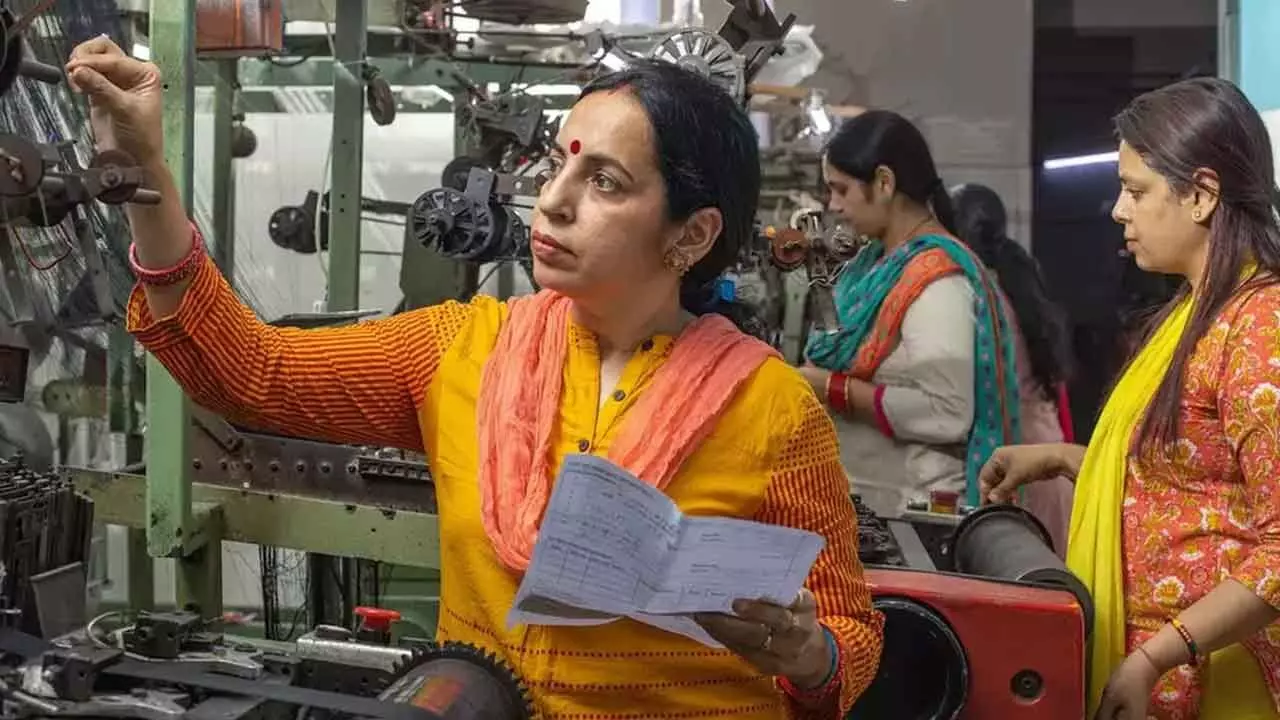Automation to boost women’s hiring in manufacturing sector
Deep-rooted societal norms and discrimination hinder women's inclusion in manufacturing
Automation to boost women’s hiring in manufacturing sector

♦ EV and telecom ancillary OEM sectors lead in women's hiring in mfg
♦ Electronics and textiles sectors have higher women representation in mfg
♦ Basic and fabricated metals, machinery, and auto sectors lag in women's employment
♦ Chemicals and pharma industries also exhibit gender imbalance in mfg
With the country moving towards becoming a $35 trillion economy by 2047, the manufacturing sector is rapidly adopting automation which is expected to increase recruitment of women, helping companies become more inclusive, a TeamLease Services senior executive has said.
"These companies have begun adopting automation in phases in these male-dominated sectors and have started recruitment of women. We expect that with the increase in adoption of automation in these industries, companies will recruit more and more women going forward," TeamLease Services Chief Strategy Officer Subburathinam P said.
He further said that, in the manufacturing sector there are several challenges that companies face while becoming more inclusive like the deep-rooted societal norms and discrimination, a lack of diverse role models and leaders, and poor work-life balance.
"In India's manufacturing sector, women are significantly underrepresented, making up only about 15-20 per cent of the workforce. However, there has been an increase in the recruitment of women in sectors that are rapidly adopting automation technologies.
"Like the electric vehicles (EV) industries and Telecom Ancillary Original Equipment Manufacturer (OEM) are making concerted efforts to hire more women, with some companies aiming for a gender-balanced workforce," he said.
Despite these challenges, many companies are making strides towards greater inclusivity through targeted initiatives and policies aimed at creating a more diverse and equitable work environment, he said. Further, Subburathinam said that in India's manufacturing sector, certain industries have made notable progress in increasing the representation of women, like in the electronics sector women constitute around 70-80 per cent of the workforce as companies strive to enhance gender diversity. Similarly, the textiles and apparel sector has traditionally had a higher percentage of women workers, benefiting from long-established roles and practices.
However, the adoption of automation is slower and being done in phases in many sectors which remain male-dominated, like the basic and fabricated metals, machinery and equipment sector, motor vehicles and auto components due to the harsh working conditions reflecting traditional industry practices, he noted.
Additionally, the chemicals and pharmaceuticals industries see more men employed, highlighting a gender imbalance that persists across various manufacturing segments, he said.

